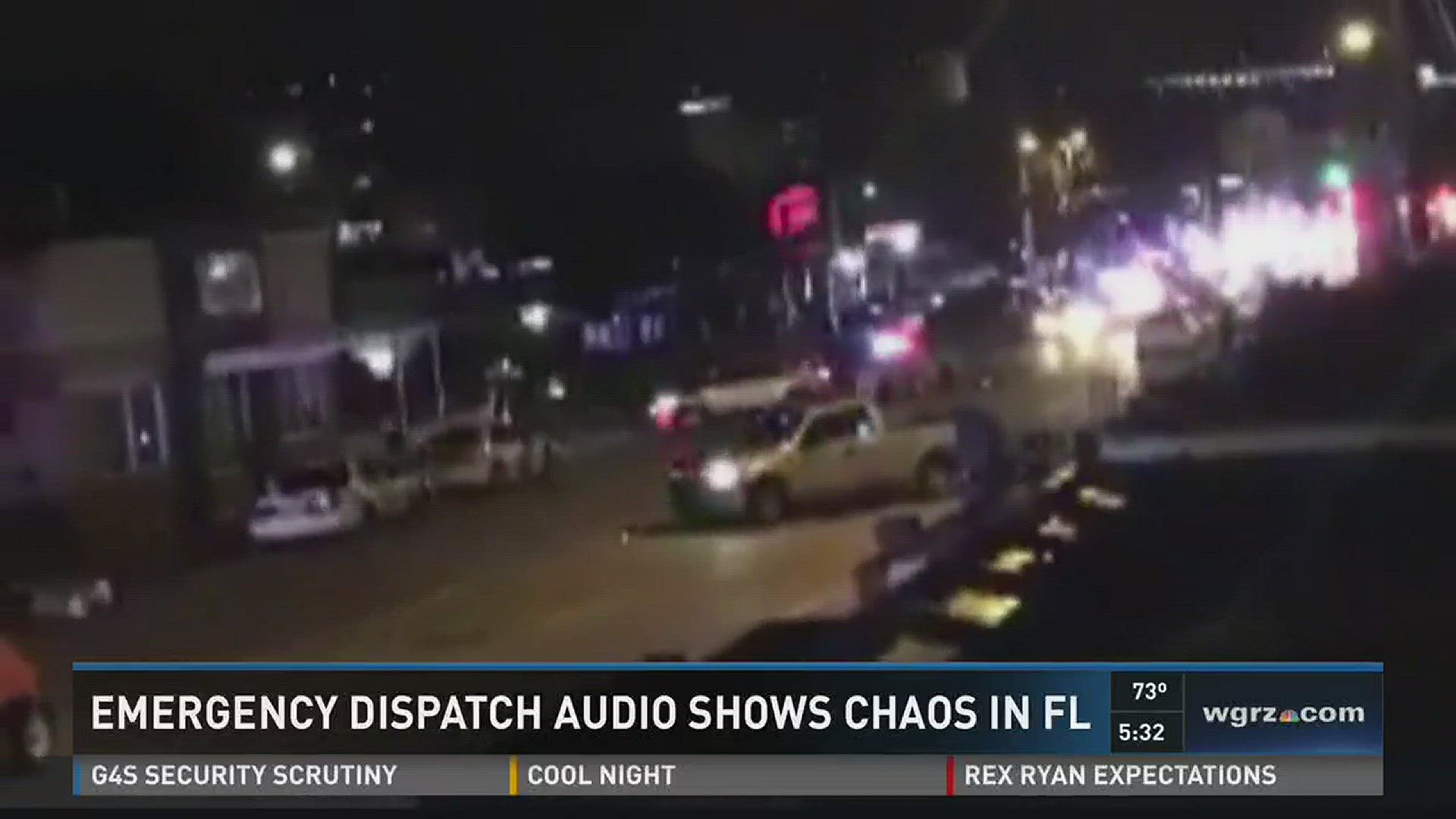ORLANDO – We’ve obtained new dispatch recordings that show why rescuers were forced to wait for hours a block away from the wounded trapped with the gunman inside the Orlando nightclub early Sunday morning.
Tegna investigative reporter Brendan Keefe also discovered at one point, Orlando Regional Medical Center turned patients away, fearing the gunman had stormed the hospital.
“We’ve got some walking wounded,” a rescuer said on the radio.
“I have ballistic vests here for any of our individuals who are entering the red zone,” said someone from the command post on the radio.
Rescuers braved gunfire to evacuate the injured outside the Pulse nightclub, but dispatch recordings detail an agonizing 3-hour wait to help those trapped inside.
“We’re just waiting for OPD (Orlando PD) to clear the building in question for possibly more patients,” said the command post on the radio. “We’re being told possibly up to 15 remaining in the club that are barricaded in.”
The first to get help: victims in the parking lot and survivors in the club who somehow managed to escape the gunman.
“We’re told that there’s a couple that may be coming out as we speak,” the command post said on the radio.
“All right – they’re coming out,” a rescuer said. “Eight – eight coming out.”
There were so many victims, ambulances shuttled back and forth constantly between the club and hospitals during the 3-hour standoff.
“Until you’re told otherwise, every time you transport a patient, please return back to the scene,” the dispatcher said on the radio.
“We’ve got at least 15 more strapped and ready,” a rescuer said.
“This is (Orlando Regional Medical Center),” the hospital said. “Only trauma alerts. If they’re walking, talking, anything else, they need to go to another unit.”
But then --
“The shooter’s making his way down to (Orlando Regional Medical Center),” said a rescuer.
“The shooter’s at (Orlando Regional Medical Center) right now,” said another.
“Okay, we’re going to let OPD confirm that’s the guy before we do anything else,” said the command post.
A medic unit reported shots fired at the hospital.
“We’ve got action – shots out here at the ER,” said a rescuer.
“Jake from (Orlando Reigonal Medical Center),” came a voice from the hospital. “Right now, we have active firing shots outside. We can’t take any more in. We have staff quarantined right now.”
Followed by –
“This is (Orlando Regional Medical Center). We have the shooter currently inside ORMC. We cannot take any more. We are on lockdown.”
“(Orlando Regional Medical Center) is on lockdown,” said a rescuer. “Shooter is contained within ORMC. No patients to ORMC.”
Just two blocks away, Orlando Regional Medical Center was so close to the scene, medics may have confused gunfire outside the nightclub as coming from outside the hospital.
A few minutes later, the hospital sounded the all-clear.
“We can start taking units again,” said the hospital on the radio.
“Lockdown lifted at (Orlando Regional Medical Center),” said a rescuer. “Transport, you copy?”
Then, comes the first hint why officers didn’t storm the club immediately to rescue the hostages trapped inside.
“Have them bring the bomb truck,” said a rescuer. “Stand by for a location.”
Dispatch tones then sounded.
“Do you want the full (explosive ordinance disposal) response, or just hazmat with the bomb truck?” asked a hazmat crew.
“Bomb truck, applicable bomb techs,” the rescuer replied.
Then, at 5:02 a.m., firefighters heard two explosions.
“Chief, was that us?” asked a rescuer.
“That was a breach! That was a breach!” said the command post.
It was the flash-bang grenades tossed by the SWAT team to stun the shooter.
“Do we need to move the bomb unit?” asked the bomb squad.
“It was a breach by the county,” said a rescuer. “I repeat, a breach.”
That was quickly followed by the sound of volleys of gunfire.
“Orlando to command, we have shots fired on scene. OPD is requesting you stay back – not enter the scene,” said the dispatcher.
“Command to all units, position of cover behind your apparatus,” said the command post.
More gunfire could be heard.
“Gunfire!” called a rescuer.
“Position of cover, all units,” called the command post. “If I can see your face, you’re not in a position of cover.”
After another moment --
“If you can send someone to their command post, they have an officer injury,” the dispatcher said.
“I need your most accessible rescue,” said the command post.
“We have an officer that needs medical attention,” said a rescuer.
“Possibly an OPD officer,” said the dispatcher.
“I believe there’s a possibility that OPD just loaded the guy up and is headed your way,” said a rescuer. “It’ll be an OPD officer.”
That was the officer shot in the head, but saved by his Kevlar helmet.
After that, police told the crew in the command post to shift positions.
“Hey, we’re being advised by OPD they want us a thousand feet away from the scene, so we’re going to break this thing down and go back to the original treatment area,” said the command post.
With the gunman dead, and firefighters forced to stay back, police officers immediately switched into rescue mode, taking the wounded directly to the hospital, nearly as close as the ambulances.
“Okay, they’ve had some victims come out,” a rescuer said. “Apparently, OPD’s loaded a few of them in a pick-up truck and driven them directly to (Orlando Regional Medical Center). We’re trying to get them to come through treatment so we can triage accordingly.”
“Give me a number of transports,” said the fire chief. “And a number of – deceased.”
“We have an approximate number only – and that is 26,” the command post said. “Twenty-six is the best number we can give you right now.”
Of course, we now know, the casualty estimates were off by about half – with a total of 50 dead including the terrorist.

